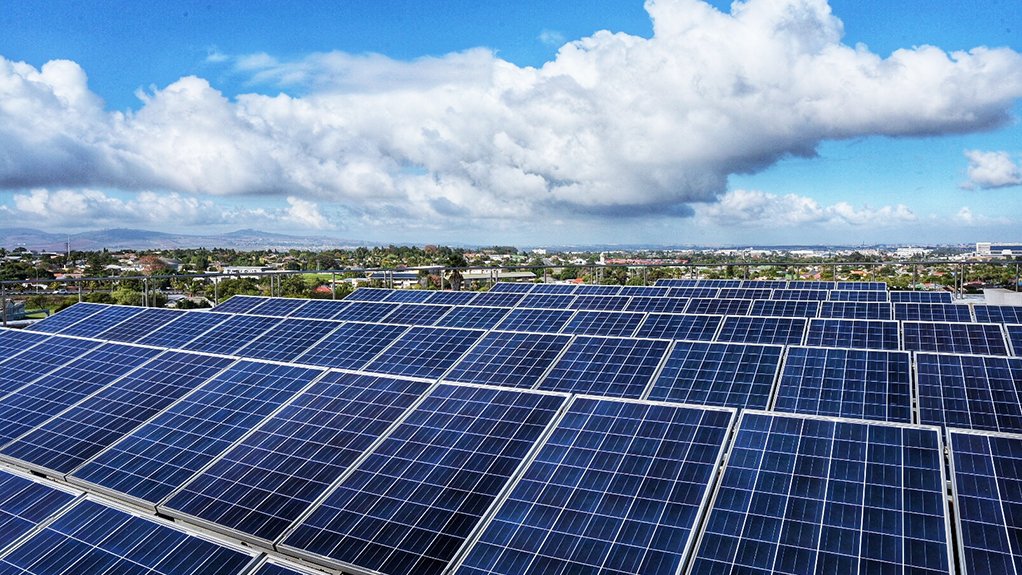While the City of Cape Town’s (CoCT’s) small-scale embedded generation (SSEG) capacity is ahead of the curve compared with other local municipalities, there is still a lot of work to be done, says CoCT Energy MMC Councillor Beverley van Reenen.
“With State-owned power utility Eskom’s incredibly precarious position, every bit helps, but SSEG’s impact on the electricity supply deficit would be greater at household level if households have storage capacity. If the SSEG uptake country-wide is drastically upscaled, it holds the potential to reduce the demand on the grid.
“Further, only hybrid SSEG systems with batteries can shield customers from loadshedding, as those without batteries automatically turn off during loadshedding events to protect the network, the household and anyone working on the network,” she states.
SSEG forms part of various projects the municipality is working on to drive long-term energy security for the economy and reduce the impact of loadshedding on its customers.
As of August this year, CoCT had 85.8 MVA of approved, commissioned grid-tied SSEG. This equates to 2 639 commercial, industrial and residential installations. Legally, all solar photovoltaic (PV) systems, whether they are grid-tied or hybrid systems are required to be authorised by the CoCT before installation.
The municipality’s SSEG installed capacity is expected to increase considerably over the coming months, owing to increased interest from customers in hybrid systems (PV plus batteries) to shield themselves from some of the loadshedding impacts, highlights Van Reenen, adding that rooftop solar systems are most popular.
Loadshedding, the rising cost of electricity and the normalisation of embedded generation are some of the aspects driving local adoption along with the growing number of service providers and technologies available compared with 2014, when the first system was approved.
Driving Adopton
SSEG continues to receive great focus as part of CoCT’s efforts to enable customers to mitigate the impact of loadshedding at a household level.
“The municipality has been a leader in supporting SSEG and since 2014 has allowed customers to connect to the network, provided bidirectional metering and monitoring, and allowed customers to feed excess electricity into the grid in exchange for a National Energy Regulator of South Africa-approved feed-in tariff.”
The feed-in tariff is designed to benefit customers and balance the cost of SSEG projects to the revenue stream CoCT derives from the sale of grid-based power.
“While the tariff, considered one of the better feed-in tariffs in the country, is deemed well-balanced, at this point in time, it is not regarded to have a material impact on the uptake of embedded generation solutions or the municipality’s revenue. The municipality caters for the drop in sales yearly when it revises its revenue projections,” advises Van Reenen, adding that only grid-tied systems can benefit from the feed-in tariff, which is complemented by a feed-in incentive.
The Hinderances
“South Africa is lagging behind the rest of the world in the development of embedded generation, largely owing to policy and legislative uncertainty and the composition of the national energy regime, where the State-owned monopoly is, by and large, the sole generator of electricity,” emphasises Van Reenen.
This policy uncertainty is the result of sluggish progress on a national regulatory level and has left gaps in the regulatory environment, to a large extent, causing the South African market to play catch-up with its international counterparts.
“CoCT has been progressive in its regulatory framework in an effort to create more certainty, reduce the risk of unauthorised activity and fly-by-night operators and to enhance safety considerations for systems connected to the grid. CoCT has specific education and awareness programmes in place to encourage the safe uptake of SSEG,” adds Van Reenen.
The relevant industry bodies and national government departments are also failing to adequately police equipment and installers. Consequently, there is an increase in the number of unsafe and poor-quality installations, which will hinder the solar PV industry and pose a significant risk to customers, municipal staff and electrical infrastructure, she warns.
However, while the cost of solar PV technology has reduced substantially over the past decade, and many banks and solutions providers offer financing, Van Reenen advises that embedded generation solutions are still too costly for some households.
“Sustainability is key going forward as more municipal customers use SSEG. CoCT’s tariff structure comprises various components to ensure that the tariffs become more cost reflective, bearing in mind affordability for customers, while also offering sustainability and more certainty for the organisation amid changes in customer demand.”
Edited by: Zandile Mavuso
Creamer Media Senior Deputy Editor: Features
EMAIL THIS ARTICLE SAVE THIS ARTICLE
ARTICLE ENQUIRY
To subscribe email subscriptions@creamermedia.co.za or click here
To advertise email advertising@creamermedia.co.za or click here













